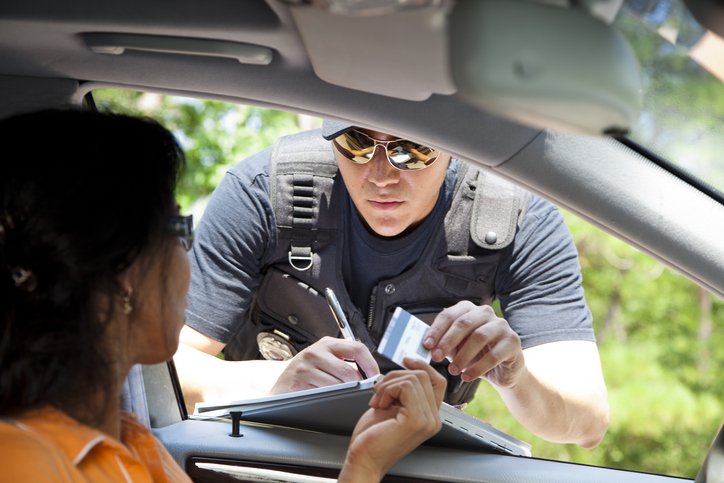When it comes to driving laws, most people think of speed limits designed to keep drivers from going too fast. However, driving too slowly can also be dangerous and, in many states, illegal. While it might seem safer to err on the side of caution, driving well below the speed limit can create serious risks for both you and other drivers on the road.
Why Driving Too Slowly is Dangerous
Driving too slowly might feel like a way to prevent accidents, but it can actually increase the likelihood of collisions in certain situations. Here are some reasons why:
- Disrupts Traffic Flow: Roads are designed with a certain traffic flow in mind. Drivers moving too slowly disrupt this flow, which can cause congestion and frustration for other drivers.
- Increases the Risk of Rear-End Collisions: When a vehicle is moving significantly below the speed limit, other drivers may not anticipate the slower speed, leading to sudden braking and an increased risk of rear-end collisions.
- Encourages Aggressive Driving: Slow drivers can provoke aggressive behaviors in other drivers, such as tailgating or dangerous passing maneuvers. This aggressive driving increases the overall risk on the road.
- Creates Hazardous Passing Conditions: When vehicles are moving too slowly, especially on highways or multi-lane roads, it forces other drivers to pass, sometimes in unsafe conditions or in no-passing zones. This can lead to head-on collisions or side-swiping.
- Road Rage: Driving too slowly, especially in the fast lane, can lead to road rage incidents, where drivers may engage in reckless behavior to get around the slower vehicle.
Is Driving Too Slowly Illegal?
While speed limits are widely known, many states also have “minimum speed limits” or “impeding traffic” laws, which are designed to prevent drivers from going too slowly and causing dangerous situations. These laws vary from state to state, but most are implemented to keep traffic moving safely and efficiently.
Generally, drivers must move at a speed that is consistent with the flow of traffic, especially on highways. Driving too slowly can result in fines or tickets for “impeding traffic,” even if you’re well below the maximum speed limit. In most cases, law enforcement officers can issue tickets if they believe the slow driving is creating unsafe conditions.
Key States That Ticket for Driving Too Slowly
While every state has some variation of speed-related laws, here are some key states where driving too slowly can result in a traffic citation:
- California: California Vehicle Code 22400 makes it illegal to drive so slowly that you block or impede the normal flow of traffic. This applies to all roadways, including highways.
- Florida: Florida law requires drivers to not drive more than 10 mph below the posted speed limit on highways unless conditions, such as weather, justify slower driving. Driving too slowly in the left lane, in particular, can result in fines.
- Texas: Texas law states that driving too slowly in the left lane of highways, unless passing, is illegal. Drivers found guilty of impeding traffic could face fines up to $200.
- Georgia: Georgia has strict laws against impeding traffic, particularly in the left lane. Drivers moving too slowly can be fined up to $2,000 for disrupting the normal flow of traffic.
- Illinois: Illinois law prohibits drivers from operating vehicles at speeds so slow as to impede normal and reasonable traffic flow. Violations can result in 5 to 20 points added to a driving record.
- Virginia: Similar to other states, Virginia prohibits driving in a manner that impedes traffic flow, particularly in the left lane of highways. Fines and demerit points may apply for violations.
When Driving Slowly Is Appropriate
There are situations where driving below the speed limit is necessary and legal. If weather conditions, road hazards, or heavy traffic require slower speeds, it is expected that drivers adjust accordingly. However, if you find yourself driving much slower than the posted speed, consider moving to the right lane to allow faster vehicles to pass safely.
Tips to Avoid a Ticket for Driving Too Slowly
- Stay in the Right Lane: On multi-lane roads, the left lane is typically for passing. If you prefer to drive slower than the flow of traffic, stay in the right lane to avoid obstructing faster vehicles.
- Be Aware of Road Signs: Some highways have posted minimum speed limits. Follow these to avoid citations and maintain safety.
- Watch for Weather and Traffic Conditions: Adjust your speed appropriately, but ensure you’re not impeding traffic unnecessarily. If conditions improve, match the flow of traffic where safe and legal.
- Pull Over if Necessary: If you’re uncomfortable with the speed of traffic or unfamiliar with the road, pull over to let faster vehicles pass safely.
Conclusion
Driving too slowly can be just as dangerous as speeding, particularly on busy highways and multi-lane roads. Many states enforce laws against impeding traffic, and drivers who fail to maintain a reasonable speed can face fines or tickets. To stay safe and avoid a citation, be aware of the minimum speed limits in your area, drive with the flow of traffic, and use the appropriate lanes for your speed. By maintaining a safe and steady speed, you help ensure the roads are safer for everyone.
Whether you need to clean up your driving record, satisfy court requirements, or lower your auto insurance rate, a DriveSafe Online Defensive Driving Course completion certificate could be worth hundreds of dollars in discount savings on your insurance premium. Get started now to enhance your driving skills and enjoy valuable insurance savings!

Patrick M. is Editorial Director for the always expanding DriveSafe Online library of courses. With over two decades of experience developing award-winning training, he now focuses on innovating online driver safety training. Pulling from his background in journalism, he steers the wheel behind the creation of top-tier content that promotes a better journey—whether on the digital highway of learning or the real roads we travel every day.
